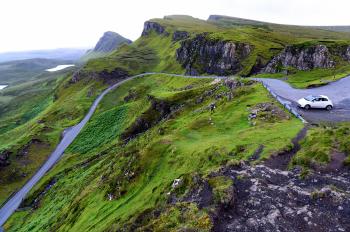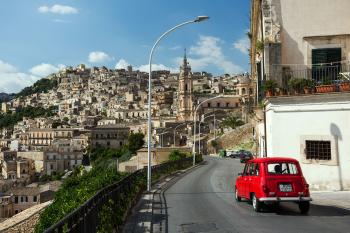How to survive a European road trip
This item appears on page 55 of the August 2017 issue.
Horror stories about driving in Europe abound. They’re fun to tell, but driving is really only a problem for those who make it one. If you know what to expect, your drive can be a highlight rather than harrowing. Here are a few tips to know before you get behind the wheel.
RESEARCH YOUR RENTAL. Most European rental cars use stick shift (standard transmission), so be sure to ask for an automatic if you’re not used to changing gears, especially if you’ll be driving on narrow, winding roads. Be aware, though, that you’ll pay about 50% more for an automatic transmission.
It’s usually cheaper to arrange rentals from the US. Shop around, and always check the fine print for add-on charges.
Remember that it might make sense to pick up and return your car in different cities so you don’t have to backtrack.
GET TO KNOW YOUR CAR. Once you pick up your car, test the wipers, headlights and gearshift, and make sure you know what type of fuel the car takes (diesel vs. unleaded) and how to release the gas cap.
BE PUMP SAVVY. Learn the local term for your fuel: diesel or unleaded.
At gas stations, prices are by the liter (about a quart, four to a gallon); regular gas is marked “95,” while super or premium gasoline is usually designated “97” or “98.”
In some countries, there’s no difference between the nozzles for diesel and gasoline; check signs before you fill ’er up.
LEARN THE RULES OF THE ROAD. Ask your rental company, or check the US State Department website (www.travel.state.gov; search for your country in the “Learn about your destination” box, then click “Travel & Transportation”). In many places, speed is monitored by cameras that click photos and send speeders tickets by mail — one last, pricey souvenir from your trip.
PLOT YOUR ROUTE. Study roads and major interchanges and decide whether to take the faster Autobahn/strada/cesta or a slower scenic route.
If you’re headed for a small or midsize town, know which big city is nearby (and most likely to be signposted) to keep you headed in the right direction.
Even if you’ll be using GPS or a mapping app, keep a paper map handy and pay attention to road signs.
PREPARE FOR TOLLS. It’s free to drive on some expressways, such as Germany’s famous Autobahn, but many roads have tolls. Some countries, such as Portugal, use automatic, cashless toll systems, but there is often a toll-booth option to pay with cash or a credit card.
Some countries’ toll roads require a permit sticker (called a “vignette”), which is displayed on the windshield. Your rental car may already have one; if not, you can buy one at border crossings, gas stations and post offices. If you don’t have a sticker, you’ll soon meet your first local... in uniform. Fines start at around $150.
PLAN FOR PARKING. If you’re staying at a hotel, ask about parking. In many cities, it’s best to park your car on the outskirts and use public transportation or taxis. Some cities even have free shuttles from parking areas into the city center.
Even better, return your rental car. Cities across Europe have taken measures to discourage urban driving. For example, to drive anywhere in downtown London or Stockholm, you’ll pay a “congestion charge.”
If you do drive into town, learn what the pavement markings mean. (Different curb colors can mean free parking. . . or no parking.) Look for signs or ask a local.
Don’t assume that an absence of meters means you can leave your car there; you may need to get a timed ticket from a nearby pay-and-display machine or display a parking-clock disc that allows you to use free, time-limited spots.
GO WITH THE FLOW. Driving in Europe tends to be more aggressive than in the US, but each country has its quirks.
For example, in Germany if you drive less than 100 mph in the fast lane, you’ve got people climbing up your tailpipe. On the other hand, because Germans are almost notoriously good at obeying the rules, if there’s a 100-mph speed-limit sign and they’re driving 180 mph, they’ll slam on the brakes.
Rural areas have plenty of other hazards, like high hedges blocking the view on narrow lanes, not to mention the occasional sheep crossing that forces you to wait and enjoy the scenery. Think of it as enjoying the local culture.
You may curse the confusing signs, narrow roads and macho habits, but it’s all part of the experience. Driving at home is mundane. Driving in Europe is memorable.
Rick Steves writes European travel guides and hosts travel shows on public TV and radio. Contact Rick Steves’ Europe (Edmonds, WA; 425/771-8303, www.ricksteves.com).


